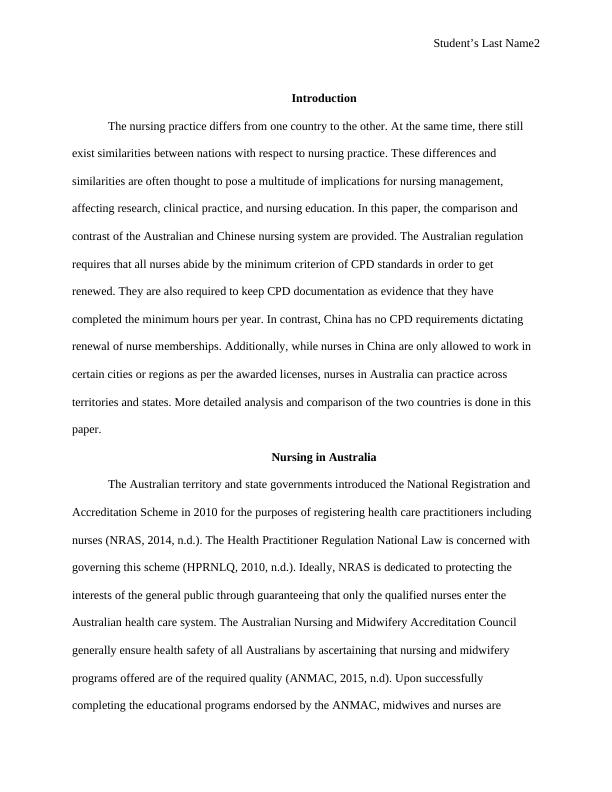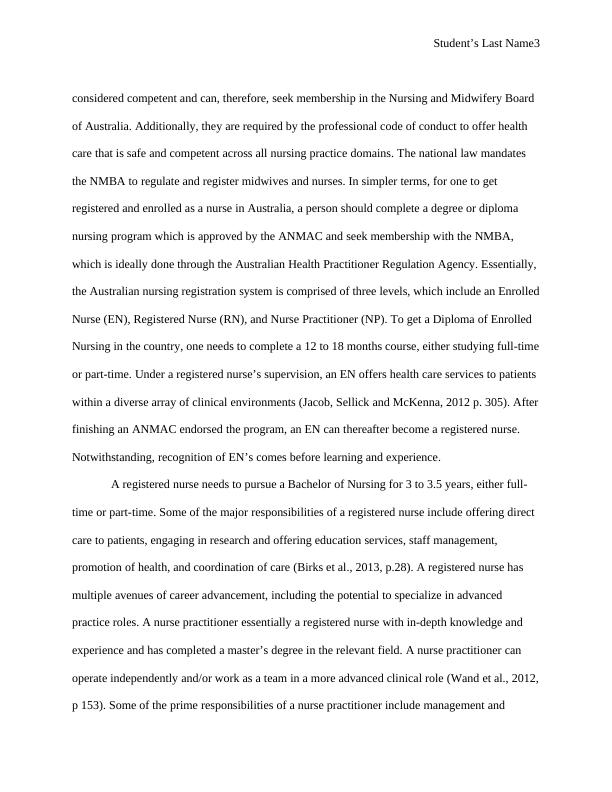Nursing in an International Context
Assessment 4: REPORT - Marking Rubric Structure (10%) High Distinction Distinction Credit Pass Expertly introduces/outlines/situate s the topic of the paper. Expertly describes the way in which the paper will proceed. Competently introduces/outlines/situate s the topic of the paper. Competently describes the way in which the paper will proceed. Adequately introduces/outlines/situate s the topic of the paper. Adequately describes the way in which the paper will proceed. Briefly introduces/outlines/situate s the topic of the paper. Briefly describes the way in which the paper will proceed. Inadequately introduces/outlines/situates the topic of the paper. Inadequately describes the way in which the paper will proceed. The paper is structured in a logical sequence so that the content flows expertly. The paper is structured in a logical sequence so that the content flows competently. The paper is basically structured in a logical sequence so that the content flows. The paper is barely structured in a logical sequence and the content flows inadequately. The paper is inadequately structured in a logical sequence so that the content does not flow The paper ends with a cogent, defendable conclusion that competently summarises the discussion within the body of the paper. The paper basically ends with a cogent,
Added on 2023-03-31
About This Document
Nursing in an International Context
Assessment 4: REPORT - Marking Rubric Structure (10%) High Distinction Distinction Credit Pass Expertly introduces/outlines/situate s the topic of the paper. Expertly describes the way in which the paper will proceed. Competently introduces/outlines/situate s the topic of the paper. Competently describes the way in which the paper will proceed. Adequately introduces/outlines/situate s the topic of the paper. Adequately describes the way in which the paper will proceed. Briefly introduces/outlines/situate s the topic of the paper. Briefly describes the way in which the paper will proceed. Inadequately introduces/outlines/situates the topic of the paper. Inadequately describes the way in which the paper will proceed. The paper is structured in a logical sequence so that the content flows expertly. The paper is structured in a logical sequence so that the content flows competently. The paper is basically structured in a logical sequence so that the content flows. The paper is barely structured in a logical sequence and the content flows inadequately. The paper is inadequately structured in a logical sequence so that the content does not flow The paper ends with a cogent, defendable conclusion that competently summarises the discussion within the body of the paper. The paper basically ends with a cogent,
Added on 2023-03-31
End of preview
Want to access all the pages? Upload your documents or become a member.



